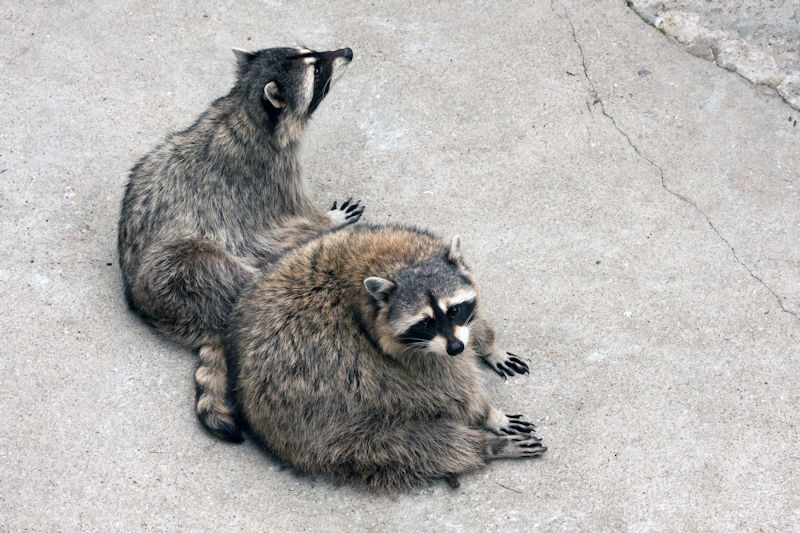In the realm of urban and suburban wildlife, raccoons stand out as adaptable and resilient creatures. As clients of our wildlife removal services, it’s crucial to understand the intricate ways raccoons protect themselves against predators. This knowledge not only fosters a deeper appreciation for these creatures but also aids in implementing effective removal strategies.
Nocturnal Mastery
Raccoons are renowned for their nocturnal lifestyle, providing them with a natural advantage against diurnal predators. The cover of darkness allows these masked bandits to navigate their surroundings with heightened senses, making them elusive targets. A study by the Smithsonian’s National Zoo sheds light on the nocturnal behavior of raccoons ([Smithsonian’s National Zoo](https://nationalzoo.si.edu/animals/raccoon)).
Clever Climbers
Raccoons are skilled climbers, effortlessly scaling trees and structures to evade ground-based predators. Their nimble fingers and sharp claws enable them to ascend with ease. The Humane Society emphasizes the raccoon’s climbing abilities in their informative guide ([Humane Society](https://www.humanesociety.org/resources/raccoons)).
Adaptability and Intelligence
Raccoons are highly adaptable and possess remarkable problem-solving skills. Their intelligence aids in quick decision-making when faced with threats. Scientific American delves into the cognitive abilities of raccoons, emphasizing their resourcefulness ([Scientific American](https://www.scientificamerican.com/article/raccoons-are-clever-critters/)).
Communication as a Defense Mechanism
Raccoons utilize a variety of vocalizations to communicate with one another, alerting the group to potential dangers. The Cornell Lab of Ornithology provides an insightful overview of raccoon vocalizations ([Cornell Lab of Ornithology](https://www.allaboutbirds.org/guide/Raccoon/sounds)).
Mimicry and Posturing
When confronted by a potential threat, raccoons resort to mimicry and posturing to deter predators. They may puff up their fur, hiss, or emit growling sounds to appear larger and more formidable. National Geographic’s article on raccoons explores their defensive behaviors ([National Geographic](https://www.nationalgeographic.com/animals/mammals/r/raccoon/)).
Olfactory Arsenal
Raccoons possess a keen sense of smell, aiding them in detecting predators from a distance. Their olfactory prowess allows them to discern potential threats and take evasive action. The Wildlife Society elaborates on the importance of smell for raccoons in their comprehensive guide ([Wildlife Society](https://wildlife.org/wildlifers-blog/the-amazing-sense-of-smell-in-raccoons/)).
Social Structure and Safety in Numbers
Raccoons often form loose-knit social groups, providing safety in numbers. This communal living strategy acts as a deterrent against predators, as larger groups can collectively defend against threats. The BBC’s Earth website explores the social dynamics of raccoons ([BBC Earth](http://www.bbc.com/earth/story/20161108-raccoons-are-surprisingly-sociable-animals)).
Understanding the various ways raccoons protect themselves against predators is crucial for effective wildlife removal strategies. As a responsible wildlife removal company, we aim to not only address the concerns of our clientele but also foster a deeper appreciation for the wildlife we encounter. By delving into the unique adaptations and behaviors of raccoons, we can work together to find humane solutions that prioritize both human and animal welfare.
For further information and resources, please refer to the provided links throughout the article. If you have specific concerns or require assistance with raccoon removal, do not hesitate to contact our expert team.

